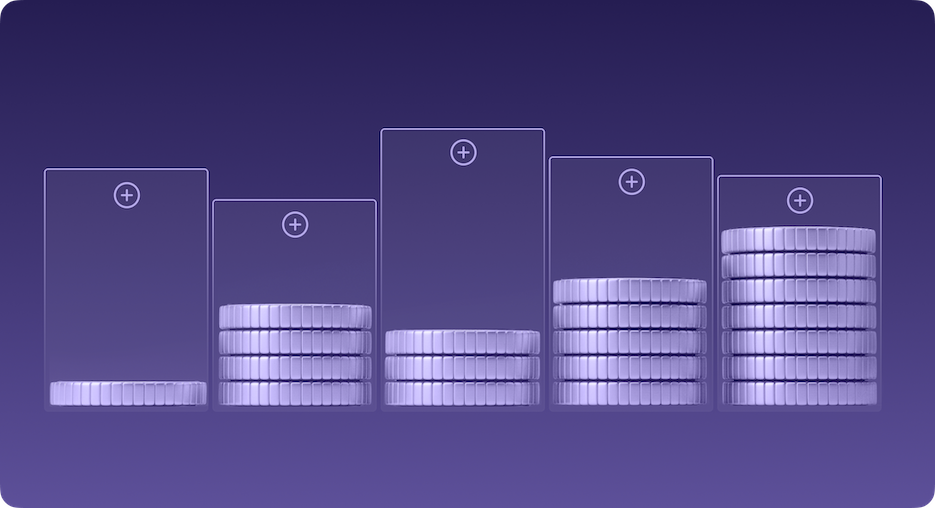The cash position is a core element of a company’s financial status.
What you'll learn in this article
- What is the cash position?
- What is its significance for companies?
- How is the cash position composed?
TL;DR
- The cash position indicates how much money a company can access at a given time to meet ongoing obligations.
- The cash position reflects a company's financial stability and its ability to cover fixed costs and unexpected expenses without external financing.
- The cash position encompasses all forms of liquid assets available in the short term, including cash, bank balances, and short-term investments.
Do you need a refreshment about cash management? Read the guide about cash management.
What is cash position?
Cash position is the total amount of liquid assets a company currently holds, including available cash and short-term deposits.
It offers a snapshot of the company’s ability to meet its immediate financial obligations. In short, the cash position provides a real-time view of the company’s financial health and liquidity.
Why is cash positioning important?
A robust cash position is essential for smooth business operations. It ensures you can cover salaries, rent, bills, and unexpected expenses without resorting to external financing. In contrast, a weak cash position can lead to liquidity shortages, threatening your business stability.
The definition of a company’s cash position varies widely based on business model, market conditions, and financial objectives.
A practical guideline for cash position is to maintain just enough cash to meet your needs but no more.
Consistent monitoring of your cash position enhances financial planning accuracy and guarantees that funds are always available to sustain uninterrupted operations.
For example, re:cap offers a software tool that provides a comprehensive view of all your bank accounts and balances in one place, delivering a quick and snapshot of your cash position.
Control your liquidity
Use re:cap to keep track of your cash position. See all bank accounts and balances in one place and improve your cash management.
Start 14-day free trialCash position: a practical example
Let's look at a tech company, "SaaS Ltd.," to illustrate the importance of cash positioning. SaaS Ltd. has fixed monthly costs of €500,000, which cover salaries, rent, and other operational expenses. The company’s current cash position is at €800,000.
Day 1: Revenue
A customer settles an outstanding invoice of €300,000, boosting the cash position to €1.1 million. With this amount, SaaS Ltd. can comfortably cover its expenses for the next two months without external funding, even if no new revenue comes in.

Day 10: Unexpected expenses
An unforeseen tax payment of €200,000 reduces the cash position to €900,000.

Day 25: Salaries and wages
At the end of the month, SaaS Ltd. disburses €400,000 for salaries and wages. This leaves the company with €500,000. While this cash position covers the company's expenses for another month, it's clear that generating additional revenue is crucial to maintaining liquidity in the future.

This example highlights the critical need for vigilant cash flow management. Even a single unplanned expense can significantly affect liquidity. To safeguard financial stability, companies should implement robust cash flow analysis, cash flow monitoring and forecasting strategies. Other than that: read our article on how to protect your cash balance.
What are elements of cash position?
A company's cash position includes all liquid assets readily available to meet its obligations. In detail, the cash position contains the following elements:
1. Cash
Plain and simple: cash covers all the company's physical cash, including what's in registers, safes, and petty cash funds.
2. Bank balances
- Current accounts: these are the funds in checking accounts that are readily available for immediate use. They form the backbone of your cash position, primarily used for daily transactions.
- Overnight deposits: these are short-term deposits that can be accessed instantly, making them an essential part of your cash position.
3. Short-term investments
- Term deposits: funds locked in for a short duration, ranging from one day to a few months. Depending on the type, they can be quickly liquidated if needed.
- Money market funds: these invest in highly liquid, short-term instruments like treasury bills, commercial papers, or short-term bonds, offering swift access to your capital.
- Deposits with other financial institutions: companies may hold deposits with other banks. While not always available daily, these can be liquidated at short notice.
4. Checks and Payment Advice
Uncashed checks and initiated payments awaiting credit are included in the cash position.
5. Receivables from short-term funding
Short-term loans with assured repayment can be considered part of the cash position.
The cash position typically comprises a mix of these components. The finance team actively manages them to ensure enough liquid assets are available to meet short-term obligations and optimize the use of funds.
The makeup of the cash position varies based on the company’s operations and liquidity strategy.
Companies in stable, low-risk environments may allocate more to short-term investments, while those in volatile or seasonal markets may prioritize immediate access to cash.
%2520EN.png)
Why manual cash positioning falls short
Manual cash positioning is slow, inefficient, and error-prone. Treasurers must log into multiple bank portals, download reports, and compile data by hand. Spreadsheets must be updated monthly.
This involves entering cash balances and identifying decreases or one-off transactions to accurately forecast the cash position.
This fragmented approach squanders time and resources. Even with BI tools, you're still managing static data that doesn’t provide real-time updates.
Consequently, decisions are often made with outdated information, resulting in missed opportunities and liquidity challenges.
Relying on manual processes to track cash positions keeps you bogged down in low-value tasks, diverting you from strategic, high-impact initiatives that drive your company forward.
Real-time cash positioning via APIs
Today, companies no longer need to manually assess their cash position. APIs enable direct connections between bank accounts and a centralized platform.
This setup provides automated, real-time updates on cash balances across all your accounts. As a result, you can eliminate manual data pulls and normalization, ensuring timely visibility into your cash position.
With an API-first liquidity platform, such as re:cap, you can access real-time insights from a single dashboard. You can connect and choose from over 14,000 bank accounts.
This approach saves time and improves accuracy by offering richer data, including detailed transaction metadata. Such information enhances your ability to categorize, analyze, and forecast cash movements effectively.
APIs provide speed and accuracy, enabling quicker and more informed decisions on liquidity, investments, and capital allocation.
Cash position is a company's pulse
Your cash position is more than just a number. It's the lifeblood of your business. That’s why cash positioning and cash flow planning is essential to a company’s stability.
By consistently monitoring and actively managing your cash, you safeguard your financial health and equip your business to navigate macroeconomic challenges with confidence.
Summary: Cash position
A company’s cash position reflects the total amount of liquid assets readily available to meet short-term obligations. This includes cash, bank balances, short-term investments, and receivables.
It offers a real-time snapshot of financial health and liquidity. By actively monitoring this position, a business ensures it can cover daily expenses, absorb unexpected costs, and continue operations without needing outside financing.
Even a single unplanned outflow, like a surprise tax bill, can quickly strain liquidity. This makes ongoing visibility and control essential.
Manual cash positioning, based on spreadsheets and disconnected bank portals, is slow and error-prone.
Today, API-powered platforms connect directly to bank accounts. They pull data in real-time and consolidate it into one dashboard. This automation improves accuracy, saves time, and enables smarter decisions about liquidity and capital allocation. A strong cash position is a strategic foundation that protects your business and supports long-term success.
Q&A: Cash position
What is the difference between cash position and cash flow?
Cash position shows how much liquid cash a company has at a specific point in time. Cash flow tracks how cash moves in and out of the business over a period of time.
In short, cash position is a snapshot. Cash flow is a timeline. Both are essential to understand a company’s financial health.
What is a cash position calculation?
To calculate your cash position, add up all liquid assets that are immediately available. This typically includes:
- Physical cash
- Bank account balances
- Short-term deposits and money market funds
- Uncashed checks or pending incoming payments
- Receivables from short-term funding
The total gives you your current cash position: your real-time liquidity status.
How often should you review your cash position?
Ideally, cash position should be reviewed daily or at least weekly. For companies with high transaction volumes or tight liquidity, daily reviews are critical.
Regular reviews help spot issues early, avoid cash shortfalls, and support better decision-making.
What does the cash position say about a company?
A strong cash position signals that a company is financially stable, well-prepared for expenses, and able to act quickly when opportunities or risks arise.
A weak or declining cash position may point to liquidity risks, inefficient operations, or poor cash management.
Is cash position the same as cash on hand?
Not exactly. Cash on hand usually refers to physical cash or money in checking accounts. Cash position is broader. It includes cash on hand plus other liquid assets like short-term investments and pending incoming payments.
Cash on hand is a part of your cash position but not the whole picture.
Control your liquidity
Use re:cap to keep track of your cash position. See all bank accounts and balances in one place and improve your cash management.
Start 14-day free trial.svg.png)


.gif)







